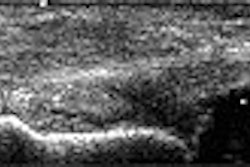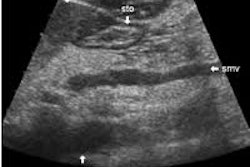(Ultrasound Review) Turkish radiologists recently described the evaluation of optic neuritis using Doppler sonography in the February issue of Radiology. They discovered that patients with optic neuritis demonstrated increased peak systolic and end diastolic velocities in the affected ophthalmic artery.
According to the authors, optic neuritis is characterized by acute visual loss, pain with eye movement, and defects in pupillary afferent reflexes. Associations include multiple sclerosis, vasculitis, or inflammatory processes, and the diagnosis is made clinically or through visual evoked potential (VEP) measurement. MR imaging is useful when patients have atypical presentations or negative VEP, and is used to further evaluate brain lesions.
In this study of 20 patients with acute unilateral optic neuritis, increased orbital vessel velocities were used for diagnosis. The authors measured the peak systolic velocity (PSV), end diastolic velocity (EDV), and resistive index in the left and right ophthalmic and central retinal arteries. Ultrasound was performed using a 7.5 MHz linear array transducer placed over the closed eyelid using a sterile coupling gel. MR imaging also was performed within 24 hours of the ultrasound scan using a 1.5-tesla unit.
Results demonstrated right-sided optic neuritis in 60% of patients, and eight had left-sided optic neuritis. They reported "increased signal intensity in and enlargement of the canalicular and orbital segments of the optic nerve with at least one MR sequence in all of the involved orbits."
Ultrasound showed a statistically significant increase in the PSV in the affected ophthalmic artery in all patients. "The mean PSV was 53.4 cm/sec in affected orbits and 28.8 cm/sec in normal orbits," they found.
A significant difference was not found comparing the resistive index, nor was there a difference comparing the central retinal arteries. The authors wrote that this clinically significant technique has not previously been reported in the literature.
The authors suggested that further analysis of this technique with larger patient numbers was needed to determine the sensitivity and specificity. "As a noninvasive method, Doppler sonography may play a role in the diagnosis of optic neuritis," they concluded.
Optic neuritis: evaluation with orbital Doppler sonographyKaraali, K et al
Dept of radiology, Akdeniz University School of Medicine, Antalya, Turkey
Radiology 2003 February; 226:355-358
By Ultrasound Review
March 28, 2003
Copyright © 2003 AuntMinnie.com



















